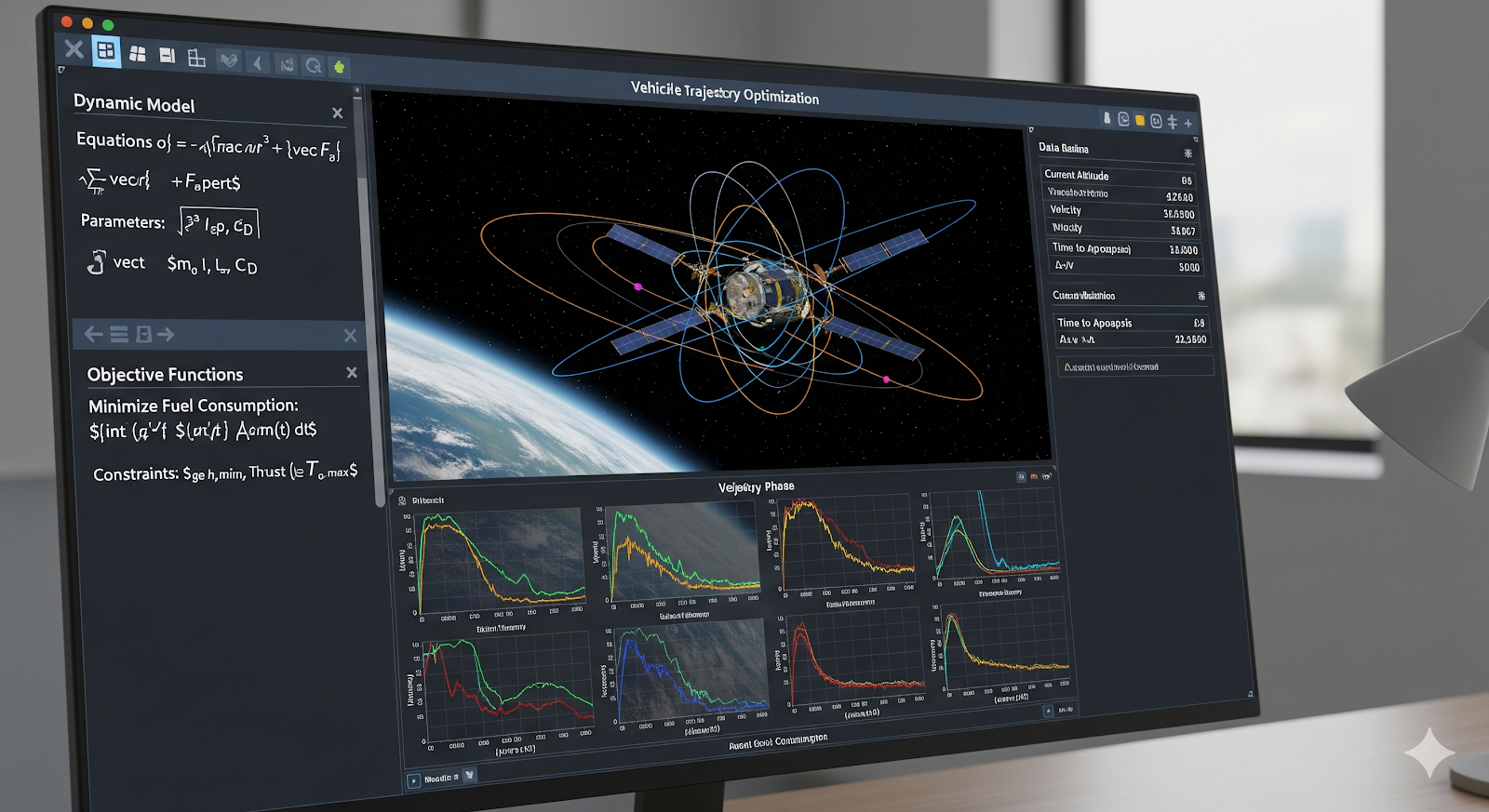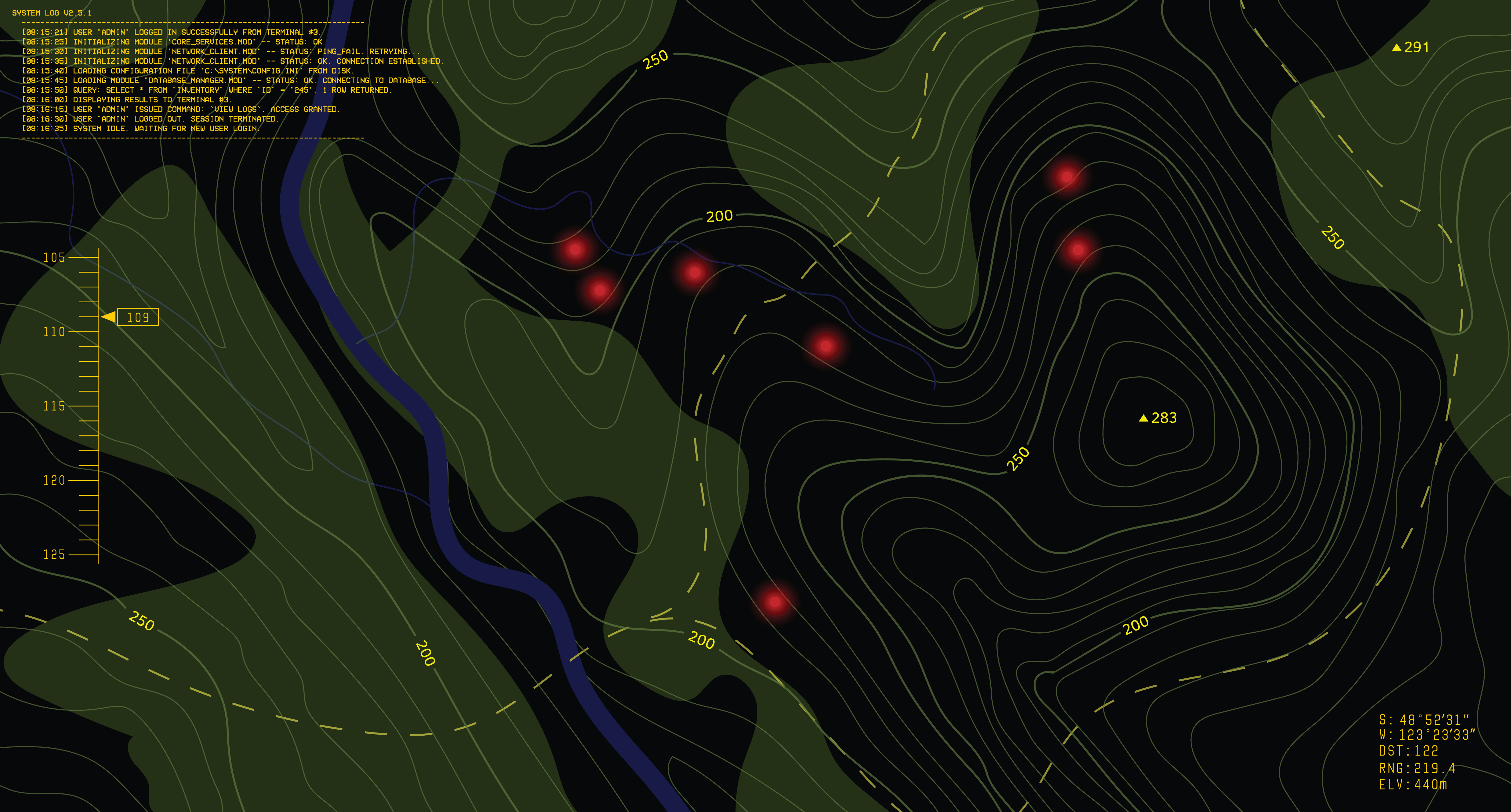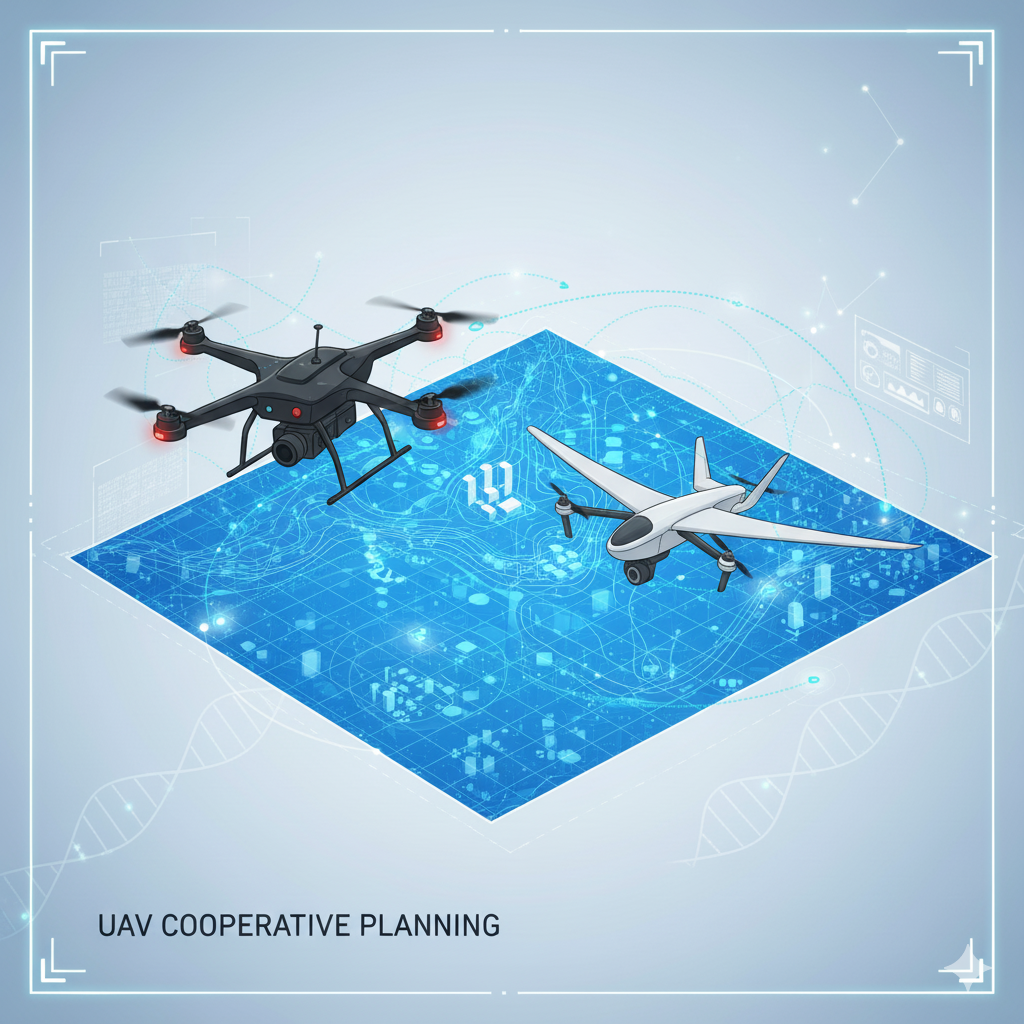Space Maneuver Vehicles (SMVs) are central to advanced defense and aerospace missions. Their trajectories must be precisely calculated to avoid collisions, conserve fuel, and meet strict mission goals. These problems are complex because they involve nonlinear dynamics, uncertain environments, and multiple competing objectives.
Traditional optimization algorithms face bottlenecks. As mission parameters increase—fuel efficiency, timing accuracy, reentry safety—the search space expands rapidly. Designers often struggle to find a trajectory that satisfies all constraints without sacrificing critical mission requirements. What is at stake is mission safety, cost efficiency, and operational readiness in both defense and commercial space applications.
Methodology: A Hybrid Optimization Approach
1.Problem Formulation
Trajectory optimization for a Space Maneuver Vehicle (SMV) must account for the interaction between gravitational, atmospheric, and aerodynamic forces. These dynamics are described using a three-degree-of-freedom (3-DOF) model that captures the essential parameters of flight.
The gravitational acceleration is modeled as a function of distance from Earth’s center, rather than as a constant, to increase realism:
Here, μ is the Earth’s gravitational parameter, and r is the distance from the Earth’s center.
The aerodynamic lift and drag are modeled as:
where V is the relative velocity, ρ is the atmospheric density, S is the reference area, and CL, CD are the lift and drag coefficients.
The coefficients are expressed as functions of the angle of attack (α):
The atmospheric density decreases exponentially with altitude, modeled as:
Here, ρ0 is the sea-level density, re0 is Earth’s radius, and hs is the scale height of the atmosphere.
In this formulation:
- θ and ϕ are longitude and latitude.
- γ is the flight path angle.
- ψ is the heading angle relative to north.
- m is the vehicle mass.
- Control variables are angle of attack (α), bank angle (σ), and thrust (T).
The Earth’s rotation rate (Ω=7.2921151×10−5rad/s) is also considered, along with a reference area of S=249.91m2.
This set of equations defines the physical and aerodynamic environment in which the SMV operates, ensuring the optimization problem remains realistic and representative of actual flight conditions.
2.Objective Functions
The optimization problem is designed to satisfy multiple objectives that often compete with one another:
Minimize the final mission time
Minimize the total aerodynamic heating
Maximize the final velocity
Maximize the final mass (fuel efficiency)
Together, these objectives define the trade-off space for trajectory planning. For example, minimizing aerodynamic heating may require a slower trajectory, while maximizing velocity could consume more fuel. The challenge lies in balancing these objectives within strict physical constraints.
3.Model Setup
The SMV trajectory modeled as an optimal control problem.
- Equations of motion include Earth’s rotation, gravitational variation with altitude, and atmospheric drag.
- Control variables: angle of attack (α), bank angle (σ), and thrust (T).
- The mission scenario considered includes skip-entry phases: roll, down control, up control, Kepler orbit, and final entry.
4.Constraints
The trajectory must:
- Avoid unsafe aerodynamic heating.
- Respect altitude, velocity, and flight path constraints.
- Remain within engine thrust and aerodynamic performance limits.
- Ensure feasibility across multiple mission phases.
5.Classical Approaches
Traditional methods such as multiple shooting and collocation (Legendre, Chebyshev pseudospectral methods) have been widely studied. However, they scale poorly in real-world conditions, often requiring precise initial guesses and large computational resources. Multi-objective problems make convergence harder, with many solutions infeasible.
6.Quantum-Inspired Evolutionary Optimization (QIEO)
QIEO introduces a new paradigm. It borrows from principles of quantum mechanics—superposition and tunneling—to explore large search spaces efficiently. Unlike classical methods, QIEO:
- Does not require a perfect starting guess.
- Balances exploration and exploitation adaptively.
- Scales well with problem complexity.
In optimization, QIEO followed this cycle at each time step:
- Compute thrust from throttle input.
- Calculate aerodynamic drag using altitude, density, and velocity.
- Update vehicle mass by subtracting fuel.
- Apply Newton’s law to compute acceleration.
- Update velocity and altitude using kinematic equations.
The optimizer continuously adjusted throttle values until an optimal trajectory emerged.
7.Results and Evaluation
Inputs:
- Maximum thrust: 7000 N
- Specific impulse: 300 seconds
Key results:
- Fuel consumption reduced to 22.62 kg.
- Smooth ascent, stable hover at target altitude, and safe descent achieved.
- Efficient thrust usage with minimal waste.
- All mission constraints satisfied.
Benchmarking:
- QIEO success rate: 100% (10/10 trials) vs. 40% for Genetic Algorithms.
- Convergence: Up to 15× faster than classical methods.
- Scalability: Stable under complex, high-dimensional mission parameters.
Business and Defense Impact
QIEO directly enhances mission success by improving speed, feasibility, and efficiency.
- Defense: Enables precise interception planning, dynamic reentry control, and adaptability to live mission updates.
- Commercial Space: Improves orbital logistics, in-space servicing, and cost-effective fuel management.
- Strategic Value: Reduces computational load, enabling near real-time decision-making and operational readiness.
Unlike classical methods, QIEO remains robust under uncertainty, environmental noise, and incomplete mission data—making it an indispensable tool for next-generation aerospace control.
FAQs
What are Space Maneuver Vehicles (SMVs)?
SMVs are advanced aerospace and defense vehicles whose trajectories must be precisely calculated to avoid collisions, conserve fuel, and meet strict mission objectives.
Why is trajectory optimization for SMVs challenging?
SMV trajectory planning involves nonlinear dynamics, uncertain environments, multiple competing objectives, and strict physical constraints, making traditional optimization methods often insufficient.
What is Quantum-Inspired Evolutionary Optimization (QIEO)?
QIEO is a hybrid optimization approach that leverages principles from quantum mechanics, like superposition and tunneling, to efficiently explore large, complex search spaces without requiring perfect initial guesses.
How does QIEO compare to classical optimization methods?
QIEO achieves faster convergence, higher success rates, and better scalability under high-dimensional mission parameters. Benchmarking shows up to 15× faster convergence and 100% success in trials versus 40% for Genetic Algorithms.
What are the practical benefits of using QIEO for SMVs?
QIEO improves mission safety, fuel efficiency, and operational readiness. It enables precise interception planning, dynamic reentry control, and robust trajectory optimization for both defense and commercial space operations.





.png)
.png)




.svg)
.svg)
.svg)
.svg)